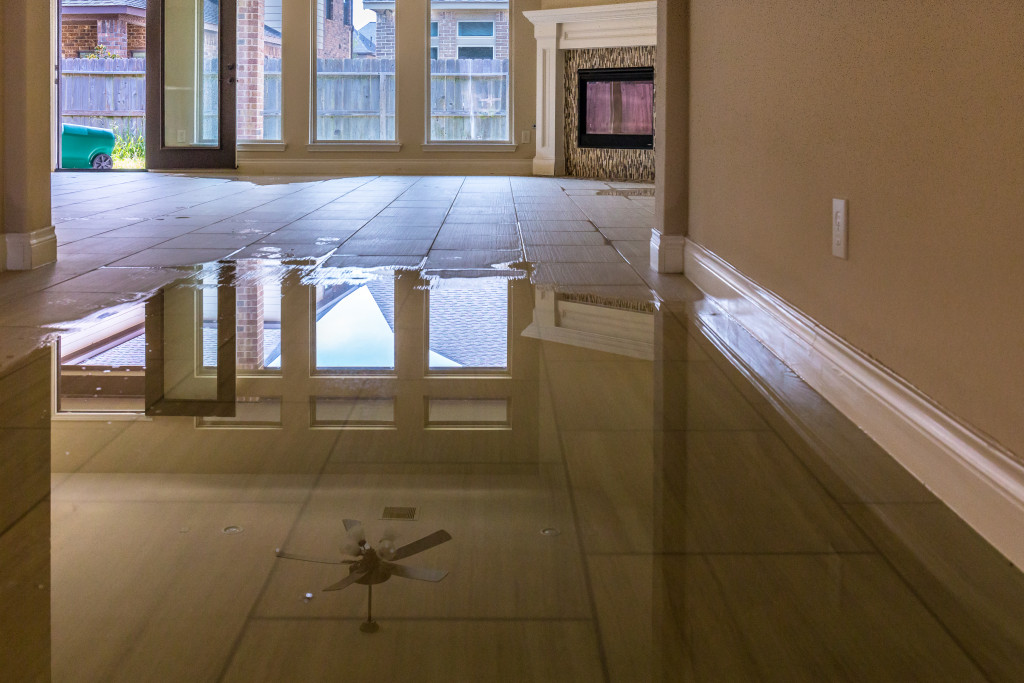After a flood, inspecting your home for damage and safety hazards is vital. This can be an overwhelming task, but checking the structure of your home and its contents properly will help you identify potential problems before they get worse. You must also take steps to prevent further damage or injury as soon as possible. To help guide you through this process, here are four things to look out for when inspecting your home after a flood.
1. Structural Damage
Checking for structural damage is one of the most critical aspects of inspecting your home after a flood. Look at all load-bearing walls and supports in the house, paying particular attention to foundation walls and pillars. Any cracks or crumbling could indicate severe damage. Also, inspect the roof for any signs of leakage or sagging. In addition, look out for water-damaged drywall and insulation. If these have been exposed to water, they may need to be replaced entirely.
It’s essential to take prompt action if you notice any signs of structural damage. If the issue is not addressed, it can lead to more serious safety concerns and costly repairs in the future. You may want to hire a professional inspector specializing in water damage services to evaluate your home thoroughly. Doing so can help you understand the damage’s extent and any necessary repairs that need to be done.
You may also want to consider having a structural engineer inspect your home if you notice a significant deterioration in the walls, floors, and other load-bearing structures. This will give you more detailed information about what is causing the problems and how they should best be addressed. An engineer can also give you an idea of the cost and time required to perform any necessary repairs.
2. Electrical Hazards
If your home has experienced a flood, you must check all electrical appliances and outlets for potential hazards. If these components have come into contact with water, there’s a good chance that they are no longer functional and could present an electrocution risk if not promptly addressed. Start by disconnecting all power sources in the house, then check each appliance individually. If necessary, call a professional certified electrician to assess the situation.
After disconnecting all power sources, inspect for any visible signs of damage. Check the wiring and outlets for burn marks or corrosion, which could indicate an electrical shock hazard. Look out for frayed wiring, defective insulation, or exposed wires, as these can create a shock risk if not addressed promptly. If you suspect an issue, then it is essential to shut off the main power supply and call a professional electrician.
It is also a good idea to inspect your circuit breakers and fuses. If either of these components has been damaged by water, they need to be replaced or repaired as soon as possible to prevent any potential shock risks. Additionally, check all extension cords and power strips for signs of wear or damage, as these can also present a potential shock hazard.
3. Mold and Mildew

Mold and mildew can quickly become a problem after a flood, as the moisture in your home provides an ideal breeding ground for these organisms. To prevent their growth, inspect any dark or damp areas of your home, such as closets, basements, and bathrooms. If you find any mold or mildew present, it’s best to treat it immediately with appropriate cleaners or solutions.
It is also essential to prevent mold and mildew from returning. Start by making sure any wet materials are completely dried out within 24 hours, as prolonged moisture can give rise to the growth of these organisms. In addition, use a dehumidifier or air conditioner to keep humidity levels in your home at a low level. This will help to reduce the chances of mold and mildew taking root.
Furthermore, clean surfaces regularly with a natural cleaning solution or bleach-water mixture. Be sure to wear protective gear such as gloves, masks, and eye protection while doing this. In addition, fix any plumbing issues in your home that could contribute to moisture buildup, as these can also be a source of mold and mildew.
4. Furniture and Belongings
Finally, it is vital to assess the condition of your furniture and belongings after a flood. To do this, start by removing any wet items, such as carpets and upholstered furniture, as these will need to be professionally dried-cleaned or replaced entirely. As you continue working through the house, look for warped items made from wood or metal. Unless you can adequately restore them, they may need to be thrown away.
You should assess wooden furniture for rot and decay and remove any affected structure parts. It is also beneficial to check any electronics or electrical outlets for damage. If they are wet, it is best to replace them instead of attempting repairs.
If you decide that your items can remain in the house while drying out, raise them on blocks or bricks. This will allow the air to circulate around the piece, helping the drying process and reducing any potential damage from the water.
In Closing
It is essential to inspect your home after a flood to ensure the safety of yourself and your family. Following the four steps outlined above, you can identify any structural damage, electrical hazards, mold and mildew growth, and furniture that may have been affected by the flooding. Taking these precautions will help you quickly address any potential risks before they become more serious problems.

